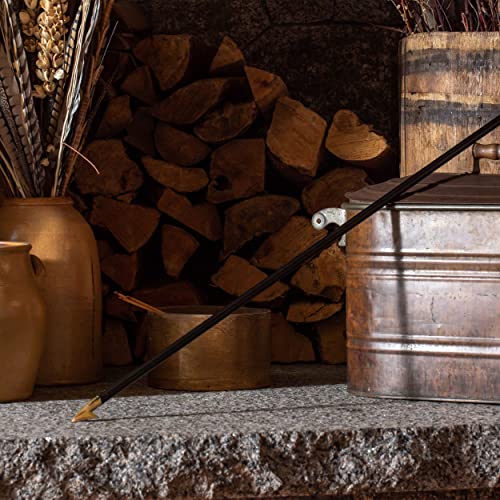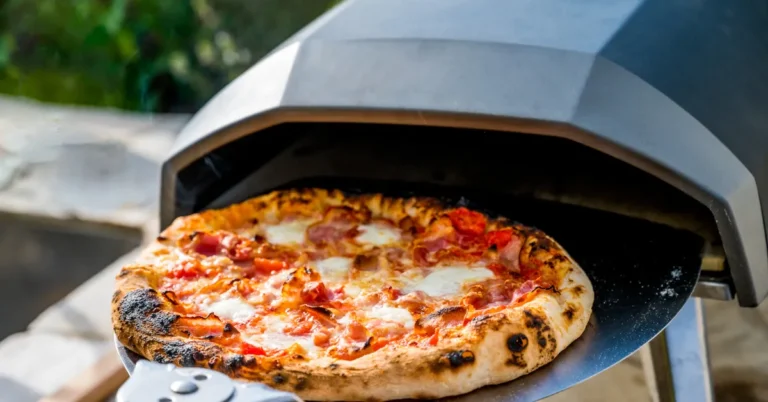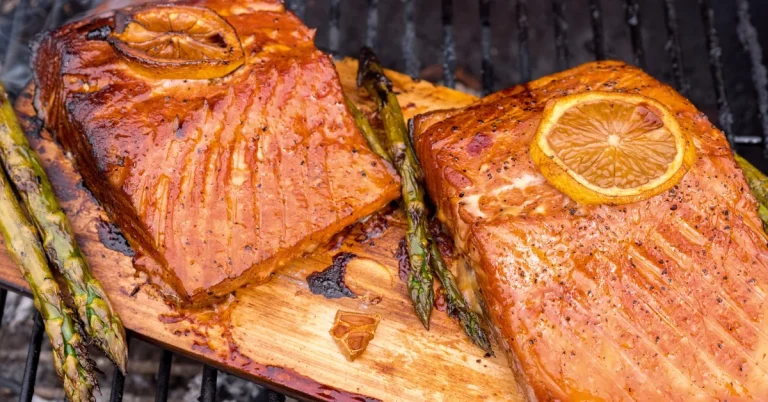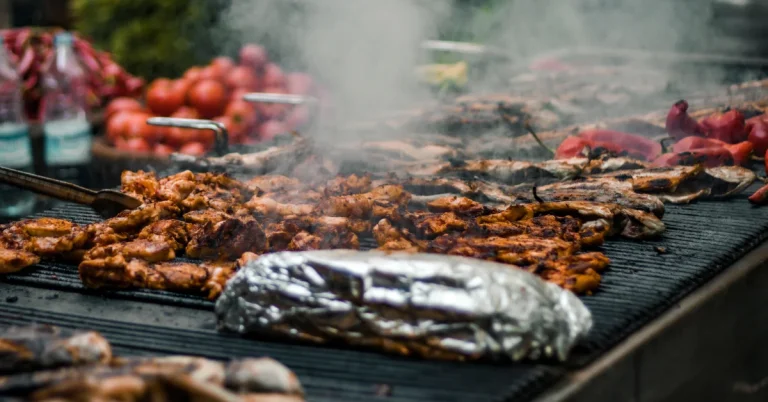Introduction
In the ever-evolving world of culinary arts, one timeless method of cooking stands as a testament to human innovation and tradition: wood-fired cooking. This blog post embarks on a journey through the rich history of wood-fired cooking, exploring its origins from ancient times to its modern resurgence and how it has woven itself into the fabric of cultures worldwide.
Genesis of Wood-Fired Cooking
The art of wood-fired cooking finds its origins in the embers of prehistory, where the discovery of fire irrevocably changed the human journey. This profound discovery, dating back to approximately 1.9 million years ago, marked a pivotal moment in the history of wood-fired cooking. Early humans, amidst the raw wilderness, first wielded the elemental power of fire not just for the essential warmth and protection it offered but as a revolutionary means to transform their nourishment.
The mastery of fire allowed our ancestors to venture beyond the limitations of raw consumption, unlocking a plethora of flavors and textures previously unattainable and significantly impacting health and nutrition. The act of roasting meat over an open flame or burying vegetables in the hot ashes beneath the fire did more than just cook the food; it introduced an entirely new palette of tastes, making the food more digestible and the nutrients more accessible.
This era heralded the dawn of communal dining and shared experiences around the fire. Societies formed rituals and bonds strengthened over the shared act of cooking and eating. The flames of wood fires became the heart of the community, a place for gathering, storytelling, and the passing of traditions from one generation to the next.
As time progressed, the techniques of wood-fired cooking evolved with humanity, adapting to the diverse environments and cultures that embraced it. From the simple pits of our ancestors to the sophisticated ovens of ancient civilizations, the fundamental essence of cooking with wood fire has endured, a testament to its enduring legacy and significance in the tapestry of human history.
Kindling Cultural Traditions
The evolution of wood-fired cooking is a narrative deeply interwoven with the ascent of civilizations across the globe. As communities evolved from nomadic bands to settled societies, the primal art of cooking over an open fire grew into a rich tapestry of culinary traditions, each influenced by the unique geography, climate, and cultural ethos of its people.
In ancient Greece, the hearth was considered the center of the home, a sacred space where food was prepared to honor the gods. Wood-fired ovens crafted from clay were used to bake bread and other staples, symbolizing the blend of divine offering and daily sustenance. Similarly, in Rome, large public bakeries equipped with wood-fired ovens became a cornerstone of urban life, providing the masses with the bread that was so central to their diet.
Meanwhile, in Japan, the tradition of cooking over an open flame took a distinct form with the advent of robatayaki, a method where seafood, vegetables, and meats were grilled over hot charcoal. This technique not only highlighted the freshness of the ingredients but also reflected the Japanese aesthetic of simplicity and respect for nature.
Across the Atlantic, the indigenous peoples of the Americas mastered the art of slow-cooking meats over wood fires, a precursor to the modern barbecue. This method was not just about flavor but was imbued with social and spiritual significance, often involving communal gatherings and rituals.
Each of these cultures contributed to the diverse legacy of wood-fired cooking, enriching the history of wood-fired cooking with their innovations, flavors, and traditions. The fire pits of ancient Greece, the ovens of Rome, the robata grills of Japan, and the barbecue pits of the Americas are all testaments to the universal appeal of cooking with fire. Through these varied practices, wood-fired cooking has become a global language of flavor, transcending boundaries and connecting us to our ancestors and to each other.
The New World and Colonial Culinary Exchange
The Age of Exploration, spanning from the late 15th to the 17th century, marked a pivotal epoch in the annals of culinary history, especially within the realm of wood-fired cooking. As European explorers charted unknown territories across the oceans, they were not just discovering new lands but also unearthing a wealth of indigenous cooking practices that were previously unknown to them. This era of cross-continental voyages ignited a transformative exchange of culinary techniques and traditions, significantly enriching the history of wood-fired cooking.
In the New World, Europeans were introduced to the indigenous practices of smoking and slow-roasting meats over open flames, techniques that were deeply ingrained in the culinary traditions of the native peoples. The method of barbacoa, for instance, where meats were slow-cooked over a pit of hot coals, amazed the Spanish conquerors and would eventually evolve into the barbecue traditions celebrated in the American South today.
Similarly, the introduction of European wood-fired ovens to the Americas led to the adaptation and fusion of traditional baking techniques with local ingredients, giving birth to unique new dishes. In return, the Old World was gifted with a plethora of new ingredients such as potatoes, tomatoes, and maize, which would go on to redefine European cuisines and their wood-fired dishes.
This period of culinary exchange was not merely about the sharing of ingredients and methods but represented a deeper blend of cultures and traditions. The integration of indigenous wood-fired techniques with European culinary practices laid the groundwork for a globalized cuisine, allowing for the creation of dishes that would have been unimaginable in a world untouched by the exploratory voyages of the Age of Exploration.
Thus, the New World and colonial culinary exchange was a cornerstone event in the history of wood-fired cooking, highlighting how culinary practices can transcend geographical and cultural barriers to create a rich, interconnected tapestry of global cuisine.
Industrialization and the Birth of Backyard BBQs
The Industrial Revolution, a period of rapid technological advancement and societal change, profoundly impacted many aspects of daily life, including the culinary world. This era of innovation heralded significant developments in culinary equipment, which played a pivotal role in transforming the ancient tradition of wood-fired cooking into the modern cultural phenomenon of backyard barbecues. This evolution is a noteworthy chapter in the history of wood-fired cooking, marking the transition from necessity to leisure and entertainment.
With the advent of the 19th century, the mass production of cast iron and the invention of portable grills made wood-fired cooking more accessible to the general public. These advancements allowed families to bring the rich flavors and communal spirit of wood-fired cooking out of the professional kitchens and into their own backyards. The barbecue, as it came to be known, became synonymous with American culture, symbolizing camaraderie, celebration, and the joy of outdoor living.
The proliferation of these cooking tools coincided with the suburbanization of post-war America, where the backyard barbecue emerged as a staple of family gatherings and social events. The grill became not just a cooking apparatus but a centerpiece for social interaction, where stories were shared, and memories made over the smoky aroma of charred meats and vegetables.
This period also saw the diversification of barbecue techniques and flavors, with different regions of the United States adopting their own distinct styles and preferences, from the vinegar-based sauces of North Carolina to the dry rubs of Texas. The backyard barbecue thus evolved into a rich tapestry of regional identities and traditions, further enriching the history of wood-fired cooking with its variety and versatility.
Today, the tradition of backyard barbecues continues to thrive, a testament to the enduring appeal of wood-fired cooking. As we gather around the grill, we not only enjoy the delicious flavors of smoked and grilled foods but also participate in a centuries-old tradition that connects us to our ancestors and to each other.
Rediscovering Authenticity: Wood-Fired Renaissance
The close of the 20th century and the dawn of the 21st have witnessed a profound resurgence in the art of wood-fired cooking, signaling a widespread yearning for culinary authenticity and a return to traditional roots. This renaissance, driven by both professional chefs and culinary enthusiasts alike, has breathed new life into the ancient practice, reasserting its significance in the modern culinary landscape. As we delve deeper into the history of wood-fired cooking, this revival emerges as a testament to the timeless appeal of cooking with fire and wood, elements fundamental to the human experience.
This renewed interest transcends mere nostalgia, embodying a collective quest for deeper connections with our food’s origins, preparation, and communal enjoyment. Artisanal pizzerias and bakeries have led the charge, championing the wood-fired oven’s unparalleled ability to impart complex flavors and textures to breads and pizzas. These establishments have become bastions of a movement that prizes the unique character and depth that only wood-fired cooking can bestow upon ingredients, drawing patrons into a sensory journey that spans centuries.
Moreover, the wood-fired renaissance has spurred innovation within culinary circles, prompting the creation of contemporary dishes that pay homage to traditional methods while embracing modern sensibilities. Chefs are exploring the versatility of wood-fired techniques, applying them to a broader array of cuisines and ingredients, from vegetables and meats to seafood and desserts, each dish offering a distinct narrative of flavor enhanced by the smoke and heat of the wood fire.
The allure of wood-fired cooking in the contemporary era also reflects a growing emphasis on sustainability and eco-consciousness. As society becomes increasingly aware of the environmental impact of our culinary choices, the efficiency and natural simplicity of wood-fired cooking offer a harmonious balance between indulgence and ecological responsibility. This aspect further enriches the history of wood-fired cooking, aligning ancient practices with today’s ethical and environmental values.
Thus, the wood-fired renaissance is not merely a revival but an evolution, merging the wisdom of the past with the innovation of the present to forge a future where authenticity, flavor, and tradition continue to thrive. As we embrace this rekindled passion for wood-fired cuisine, we not only honor our culinary heritage but also contribute to its enduring legacy.
Modern Fusion and Culinary Artistry
In the vibrant landscape of contemporary cuisine, wood-fired cooking has transcended its ancestral roots to become a canvas for culinary innovation and artistry. Today, this time-honored technique marries tradition with modern gastronomy, allowing chefs to express creativity while paying homage to the primal essence of cooking with fire. The infusion of wood-fired elements into high-end restaurants and gourmet food trucks alike signals a transformative chapter in the history of wood-fired cooking, one that melds the rustic with the refined in a celebration of flavor and technique.
Across the globe, culinary pioneers are exploring the boundless possibilities that wood fire presents, integrating it into a diverse array of culinary traditions. From the aromatic pizzas of Neapolitan pizzerias to the succulent meats of Argentine asados, the influence of wood fire is unmistakable, adding depth and character to dishes that speak to both the past and the future. These establishments are not just serving food; they’re offering an experience, where each dish tells a story of cultural synthesis and culinary evolution.
Moreover, the advent of wood-fired cooking in the modern dining scene has sparked a movement towards using locally sourced woods, each imparting its unique flavor profile to the cuisine. Chefs are becoming ever more experimental, using applewood to sweeten pork, mesquite to intensify steaks, and cherry wood to subtly flavor seafood, turning each meal into a meticulously crafted work of art that reflects both the ingredients’ origins and the chef’s vision.
This reimagining of wood-fired cooking as a form of culinary artistry extends beyond the confines of traditional restaurants. Gourmet food trucks and pop-up eateries have embraced the mobility of wood-fired grills and ovens, bringing artisanal eats to the streets. This democratization of gourmet food challenges the conventional dining experience, allowing a broader audience to savor the smoky allure of wood-fired dishes.
As we continue to navigate the ever-expanding universe of food, the modern fusion of wood-fired cooking stands as a testament to the enduring appeal of combining fire, wood, and culinary creativity. It is a dynamic, evolving practice that not only honors its rich history but also continually redefines the boundaries of taste and tradition in the quest for unforgettable dining experiences.
Conclusion
Wood-fired cooking is more than a technique; it is a link to our past and a symbol of our shared human journey. This practice embodies the essence of tradition and progress, a key element in the history of wood-fired cooking that connects generations of cooks and food lovers across time.
For more insights and tips on elevating your home culinary experience, read more from our Table and Court blog. Check out all our selected supplies, tools and equipment in our Shop. Join us as we explore the exciting world of wood-fired cooking and beyond.
















